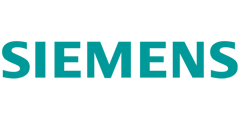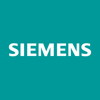Human-in-the-Loop: Why Trust - and Responsibility - Are the True Accelerators of AI
In my previous post for the Siemens Xcelerator community, I compared today’s AI revolution to the rise of electricity. When electrification swept through factories in the early 20th century, it didn’t simply illuminate workspaces - it reorganized production, redesigned roles, and gave birth to entirely new industries.
Artificial intelligence is following a similar trajectory. But as with electricity, the real transformation won’t come from the technology itself - it will come from how we design around it.
From Electrification to Intelligence: A Historical Parallel
When electricity entered industry, early factories treated it as a bolt-on utility. Machines were still arranged along mechanical power lines until visionary engineers re-architected plants for distributed electric motors. Productivity soared only when organizations reimagined workflows, safety systems, and workforce skills around the new energy source.
AI today sits at a similar inflection point. According to McKinsey’s 2024 State of AI Survey, fewer than 20% of enterprises have scaled AI beyond pilots. The bottleneck is not computing power - it’s trust, design, and human adaptation.
Human-in-the-Loop (HITL): The Architecture of Trust
Research from Stanford HAI and the MIT Initiative on the Digital Economy consistently shows that human oversight is the single strongest predictor of successful AI adoption. “Human-in-the-Loop” (HITL) design embeds that oversight directly into workflows, ensuring that algorithms amplify rather than replace human judgment.
HITL is not a brake on automation; it is the steering wheel. It keeps organizations accountable for fairness, ethics, and context - areas where data alone cannot decide.
Why Human-in-the-Loop Is the New Industrial Design
Just as electrification transformed factory layouts, Human-in-the-Loop will transform enterprise architecture. Every workflow must now answer three design questions:
• Where does human judgment add irreplaceable value?
• Where can AI operate autonomously under defined guardrails?
• How do the two continuously learn from each other?
Enterprises that master this design will operate like cybernetic systems - self-correcting, transparent, and adaptive.
They will innovate faster because humans remain in control of meaning and purpose.
Siemens Industrial Co-Pilot: A Living Example
Siemens recently introduced the Industrial Co-Pilot, an AI assistant that helps engineers, operators, and maintenance teams design and optimize production processes in real time.
Rather than replacing experts, it acts as an intelligent collaborator - an “engineering Jarvis” of sorts - augmenting human insight with instant data synthesis and simulation.
• In manufacturing, the Co-Pilot analyses sensor data to propose design adjustments, while humans decide which trade-offs best serve safety and performance.
• In energy systems, it can suggest optimal configurations for efficiency, but operators choose how to balance sustainability, cost, and resilience.
• In software development, it automates documentation and testing, freeing engineers to focus on innovation.
This is Human-in-the-Loop at scale: humans remain accountable for strategy and values; AI accelerates cognition and execution.
And other examples already exist across industry:
• Energy and utilities: Grid-optimization systems can predict demand fluctuations in milliseconds, but human operators decide when to prioritize resilience over efficiency - especially in crisis scenarios.
• Mobility: AI can rebalance city traffic in real time, yet planners remain responsible for equity, accessibility, and safety outcomes.
• Industrial operations: Predictive-maintenance copilots - like Siemens Industry Copilot - illustrate how generative AI can augment engineers’ expertise. The technology suggests solutions, but humans validate and execute them within regulatory and ethical boundaries.
From Jarvis to Reality: A Vision of Augmented Performance
Popular culture often imagines AI - e.g., in Iron Man, Tony Stark’s “Jarvis” doesn’t replace him - it expands his reach. That is the real vision of AI.
When intelligence is designed to complement rather than compete with people, enterprises unlock a new era of productivity and creativity.
The future of work will not be measured by how much we automate, but by how much human ingenuity we amplify.
AI copilots, when grounded in HITL principles, give professionals superpowers: contextual awareness, instant knowledge recall, and predictive foresight. But just like Tony Stark, human operators remain accountable for direction, intent, and impact.
The Responsibility of AI Practitioners
Technology practitioners stand at a defining ethical crossroads.
Their design choices will determine whether AI becomes a tool of empowerment or displacement. Every prompt, dataset, and deployment decision carries societal consequences.
As OECD’s 2024 AI Governance Outlook warns, “the future of AI adoption depends less on capability and more on stewardship.” AI leaders must design for enhancement, not substitution. That means ensuring people remain central to decision-making, safety, and innovation.
Responsible practitioners must:
- Design for enhancement, not substitution. Frame AI as a performance partner that frees humans to focus on creativity, safety, and strategy.
- Embed transparency and explainability. Workers must understand how recommendations are generated to maintain confidence and accountability.
- Champion workforce adaptation. Enable reskilling and inclusion by designing AI solutions with subject matter experts and workflow owners as part of every development and deployment. Research from the World Economic Forum (2023) shows that enterprises investing in reskilling realize adoption rates 30-40 percent higher than peers.
- Operationalize ethics. Move from “principles on paper” to auditable governance embedded in each model lifecycle. Similar to security principles, ensure regular audit is in place with follow-up on correctional actions.
The MIT Sloan Management Review (2024) found that enterprises embedding human oversight at each phase of AI lifecycle development achieve 30-40% higher trust and adoption rates than those that don’t.
The implication is clear: ethical design is not just good governance - it’s good business.
Trust as Competitive Advantage
Enterprises that internalize Human-in-the-Loop as a design philosophy - not merely a compliance checkbox - will scale faster and safer.
As the OECD’s 2024 AI Governance Outlook notes, sustainable AI adoption depends on balancing autonomy and oversight. The companies that master this balance will not only innovate more effectively but will also attract talent and public trust.
Just as the electrical grid became the backbone of industrial modernization, AI is evolving into the decision infrastructure of the 21st-century enterprise.
But infrastructure must be trusted. That’s why platforms like Siemens Xcelerator - which connect AI, data, and human expertise through open, interoperable systems - are so powerful. They create ecosystems where human oversight, feedback, and learning are built in from the start.
This ecosystem approach ensures that every new model, workflow, or tool reinforces - not erodes - trust.
Takeaways for the Siemens Xcelerator Community
AI is the new electricity. Its real power emerges only when organizations redesign workflows and skills around it.
Human-in-the-Loop is the architecture of trust. It keeps humans responsible for ethics, safety, and intent.
AI practitioners shape societal impact. Designing systems that enhance rather than replace human capability will unlock new growth and innovation.
Ecosystems amplify adoption. Open, interoperable platforms like Siemens Xcelerator provide the connective tissue for trusted, collaborative AI development.
Final Thought
This ongoing industrial transformation won’t be powered merely by data - it will be defined by responsible and ethical design.
Human-in-the-Loop design turns AI from a black box into a partnership - one where humans set the goals, machines amplify the means, and together they generate outcomes that neither could achieve alone.
When AI practitioners frame technology as an enabler of human performance, not its replacement, they don’t just improve productivity - they expand the boundaries of what innovation means.
Just as electrification once redefined physical work, Human-in-the-Loop design will redefine intelligent work - making enterprises more adaptive, accountable, and profoundly human.




